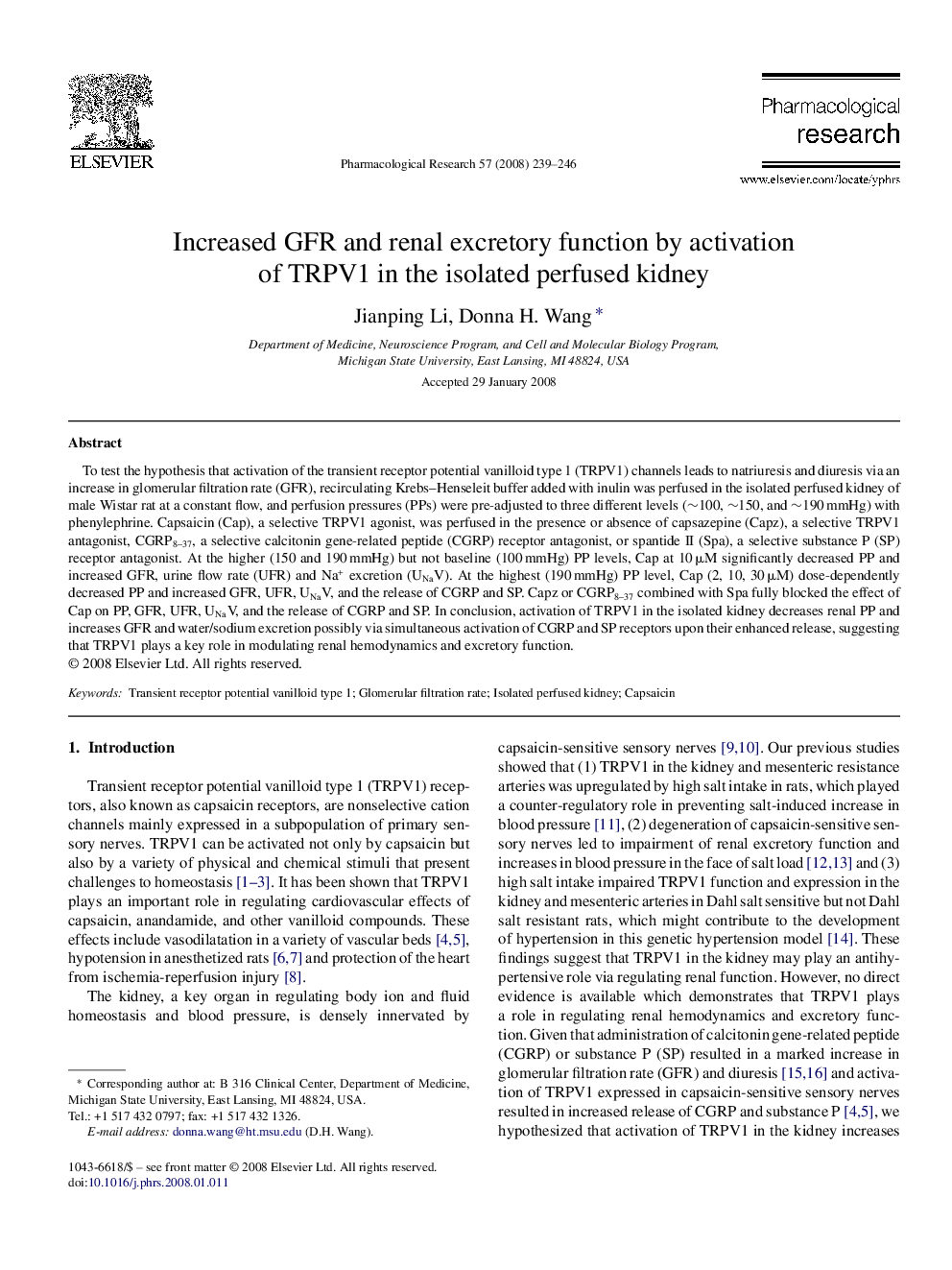| Article ID | Journal | Published Year | Pages | File Type |
|---|---|---|---|---|
| 2562612 | Pharmacological Research | 2008 | 8 Pages |
Abstract
To test the hypothesis that activation of the transient receptor potential vanilloid type 1 (TRPV1) channels leads to natriuresis and diuresis via an increase in glomerular filtration rate (GFR), recirculating Krebs-Henseleit buffer added with inulin was perfused in the isolated perfused kidney of male Wistar rat at a constant flow, and perfusion pressures (PPs) were pre-adjusted to three different levels (â¼100, â¼150, and â¼190 mmHg) with phenylephrine. Capsaicin (Cap), a selective TRPV1 agonist, was perfused in the presence or absence of capsazepine (Capz), a selective TRPV1 antagonist, CGRP8-37, a selective calcitonin gene-related peptide (CGRP) receptor antagonist, or spantide II (Spa), a selective substance P (SP) receptor antagonist. At the higher (150 and 190 mmHg) but not baseline (100 mmHg) PP levels, Cap at 10 μM significantly decreased PP and increased GFR, urine flow rate (UFR) and Na+ excretion (UNaV). At the highest (190 mmHg) PP level, Cap (2, 10, 30 μM) dose-dependently decreased PP and increased GFR, UFR, UNaV, and the release of CGRP and SP. Capz or CGRP8-37 combined with Spa fully blocked the effect of Cap on PP, GFR, UFR, UNaV, and the release of CGRP and SP. In conclusion, activation of TRPV1 in the isolated kidney decreases renal PP and increases GFR and water/sodium excretion possibly via simultaneous activation of CGRP and SP receptors upon their enhanced release, suggesting that TRPV1 plays a key role in modulating renal hemodynamics and excretory function.
Keywords
Related Topics
Health Sciences
Pharmacology, Toxicology and Pharmaceutical Science
Pharmacology
Authors
Jianping Li, Donna H. Wang,
